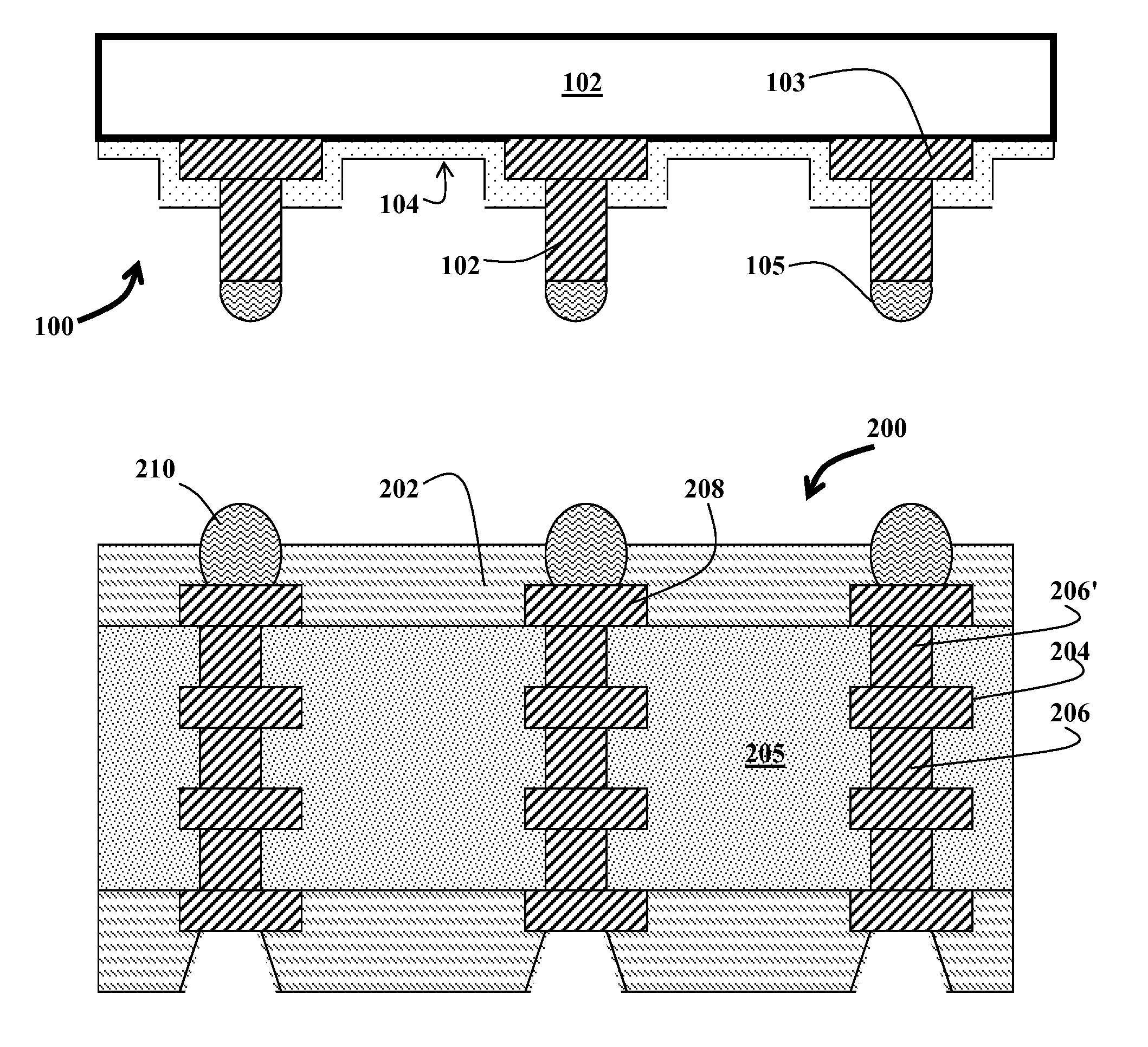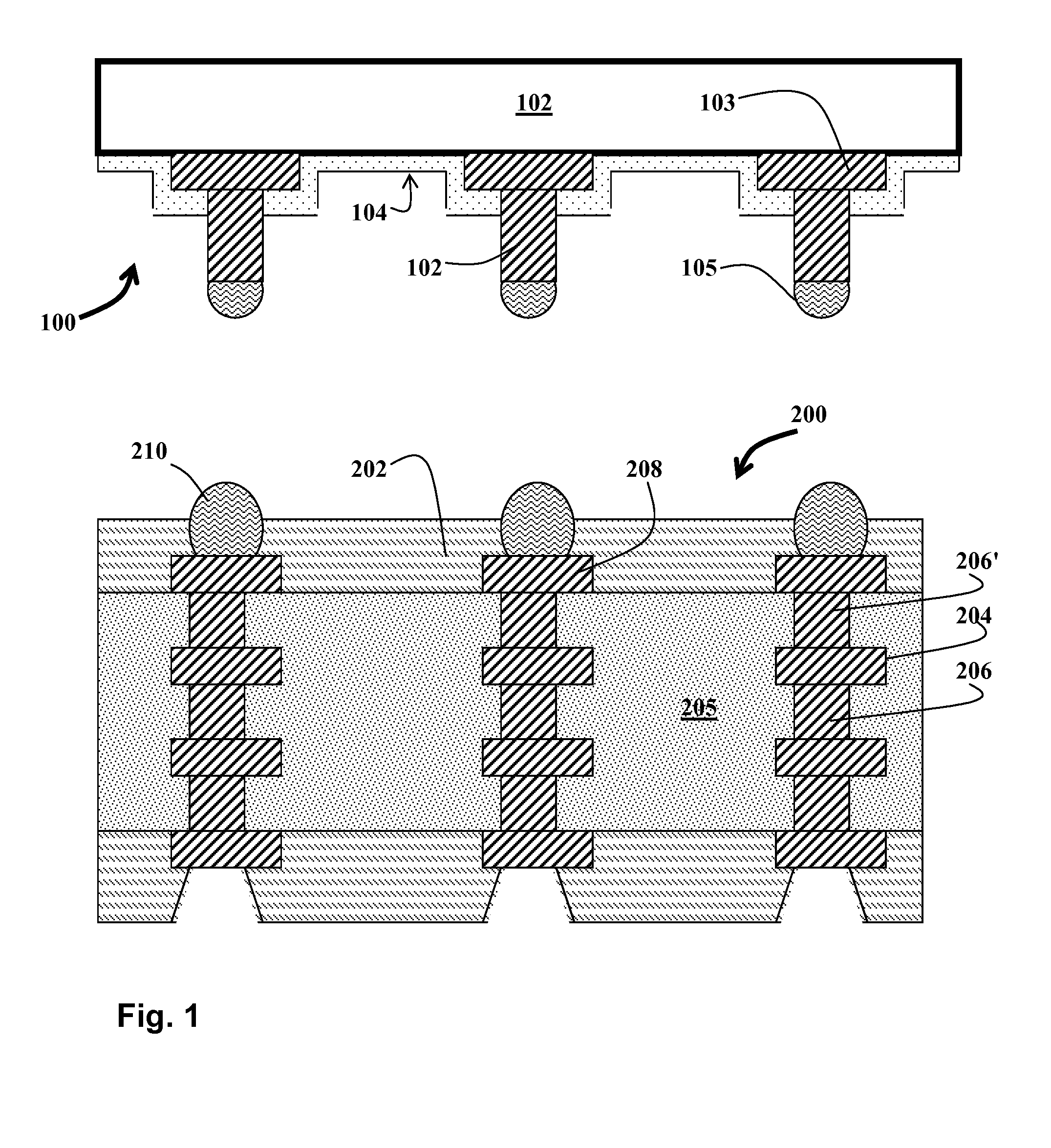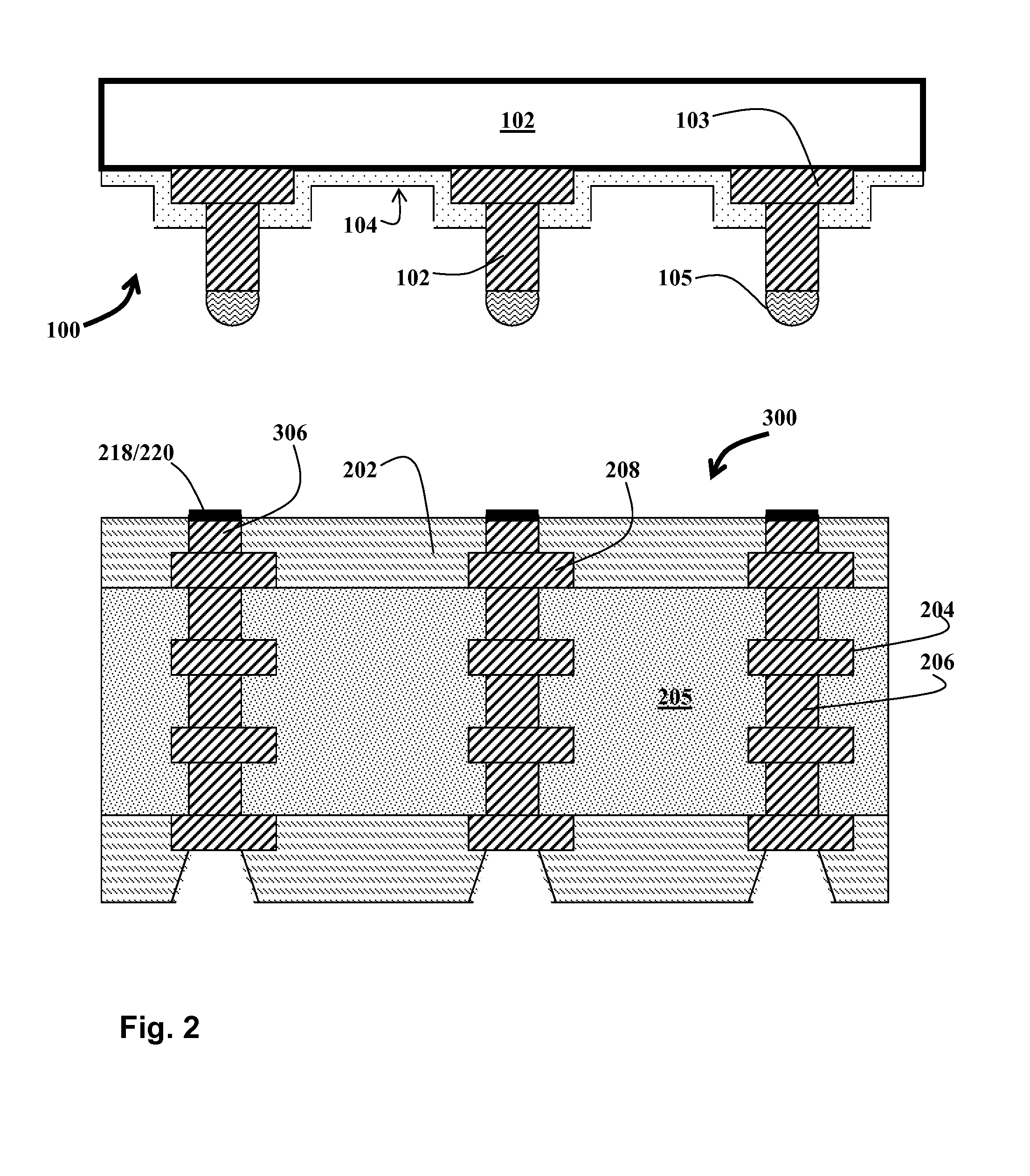Novel Terminations and Couplings Between Chips and Substrates
a technology of interconnecting structures and couplings, which is applied in the direction of circuit masks, instruments, and semiconductor/solid-state device details, etc., can solve the problems of high cost of fabrication, high production cost, and difficulty in producing high-quality vias. high density, less limited pitch, and high yield
- Summary
- Abstract
- Description
- Claims
- Application Information
AI Technical Summary
Benefits of technology
Problems solved by technology
Method used
Image
Examples
Embodiment Construction
[0097]In the description hereinbelow, support structures consisting of metal vias in a dielectric matrix, particularly, copper via posts in a polymer matrix, such as polyimide, epoxy or BT (Bismaleimide / Triazine) or their blends, reinforced with glass fibers are considered.
[0098]It is a feature of Access' photo-resist and pattern or panel plating and laminating technology, as described in U.S. Pat. No. 7,682,972, U.S. Pat. No. 7,669,320 and U.S. Pat. No. 7,635,641 to Hurwitz et al., incorporated herein by reference, that large panels comprising very large arrays of substrates with very many via posts may be fabricated. Such panels are substantially flat and substantially smooth.
[0099]It is a further feature of Access' technology that vias fabricated by electroplating using photoresists and may be narrower than vias created by drill & fill. At present, the narrowest drill & fill vias are about 60 microns. By electroplating using photoresists, a resolution of under 50 microns, or even...
PUM
 Login to View More
Login to View More Abstract
Description
Claims
Application Information
 Login to View More
Login to View More - R&D
- Intellectual Property
- Life Sciences
- Materials
- Tech Scout
- Unparalleled Data Quality
- Higher Quality Content
- 60% Fewer Hallucinations
Browse by: Latest US Patents, China's latest patents, Technical Efficacy Thesaurus, Application Domain, Technology Topic, Popular Technical Reports.
© 2025 PatSnap. All rights reserved.Legal|Privacy policy|Modern Slavery Act Transparency Statement|Sitemap|About US| Contact US: help@patsnap.com



